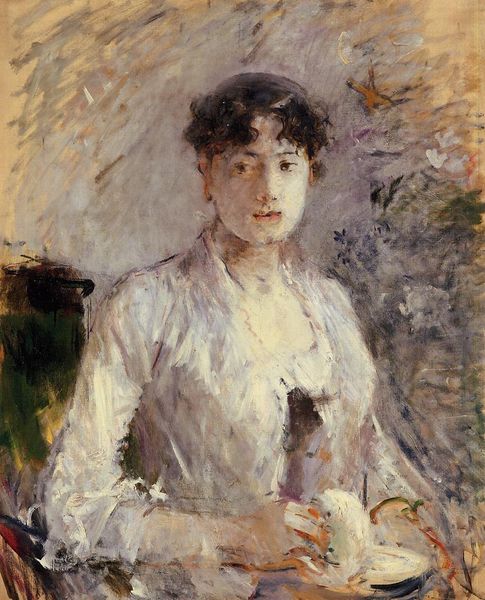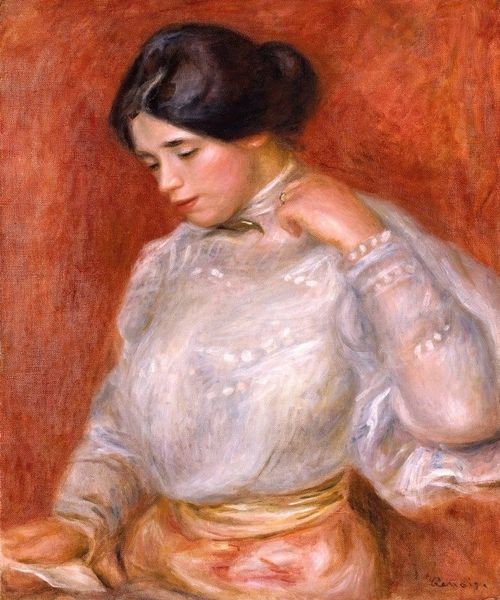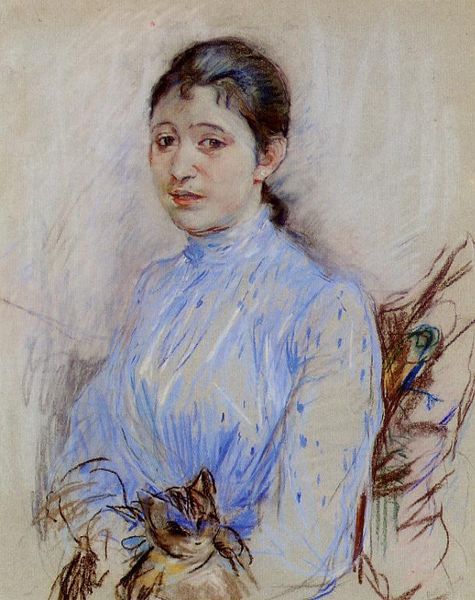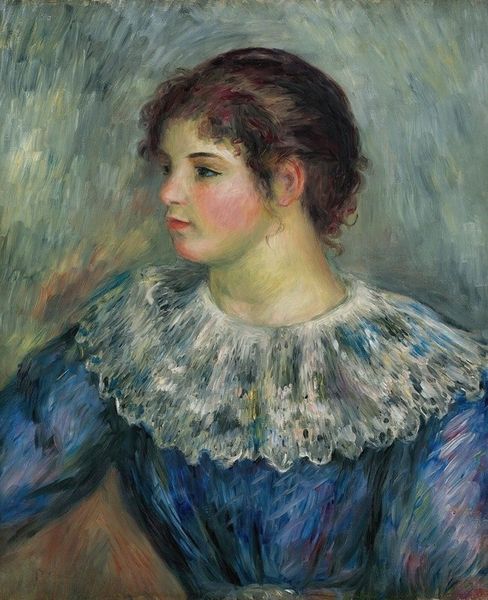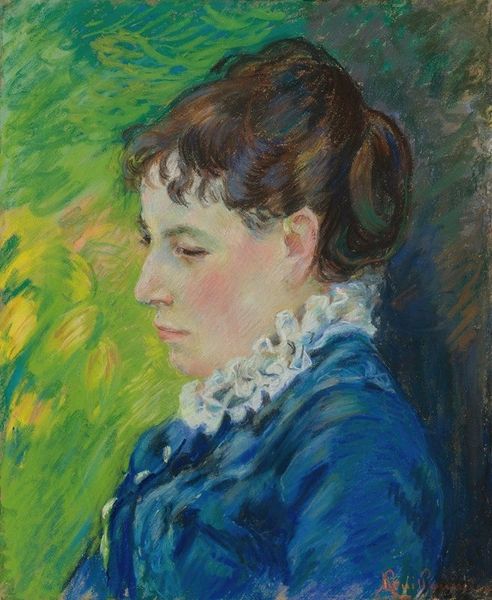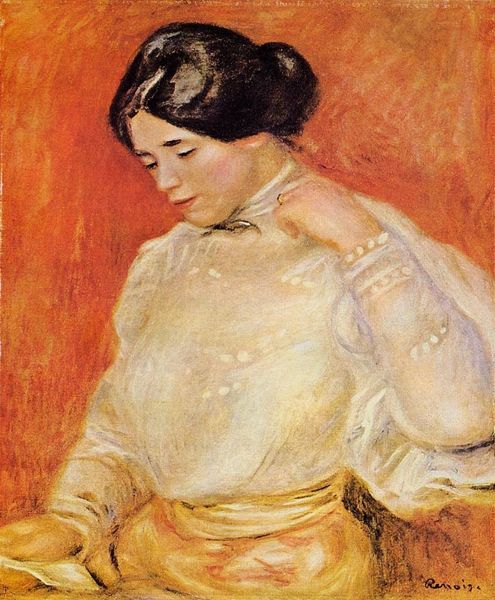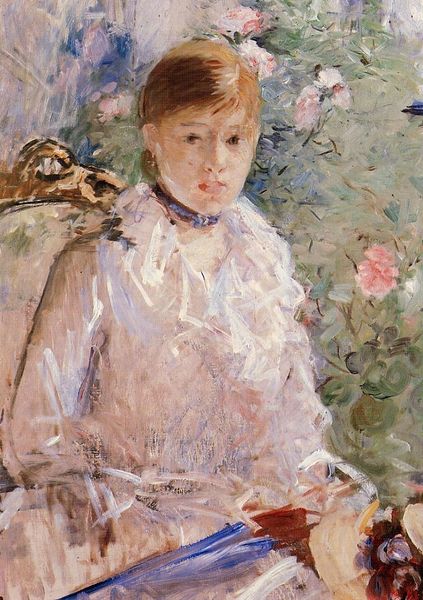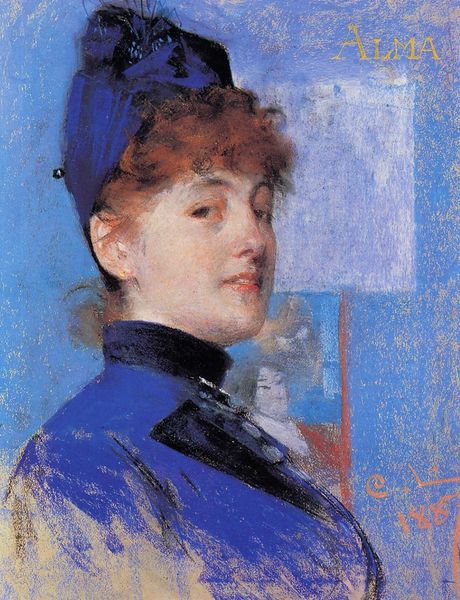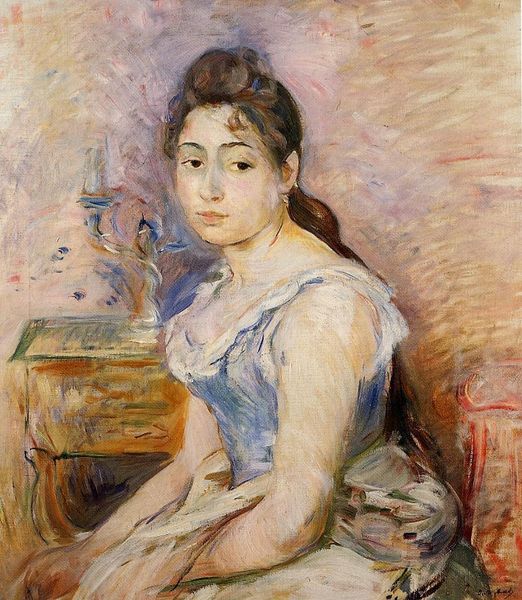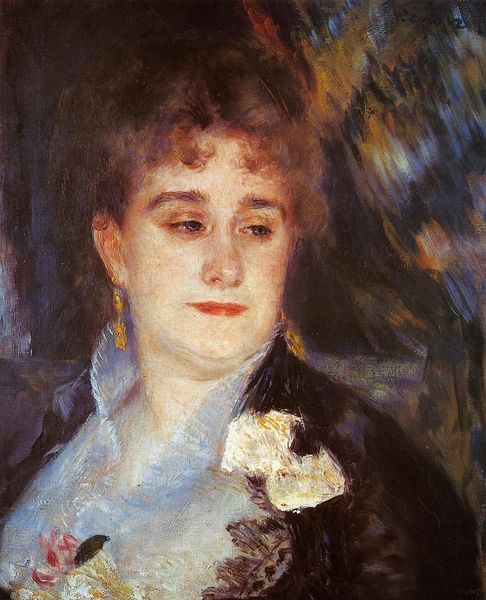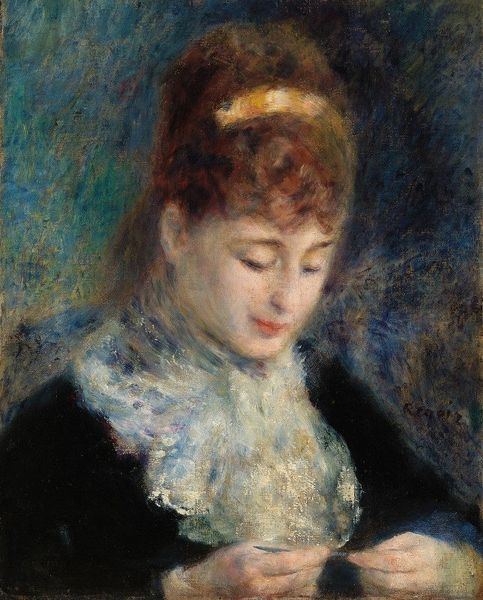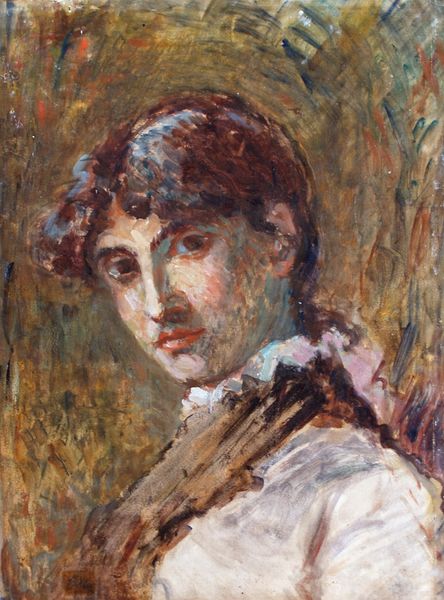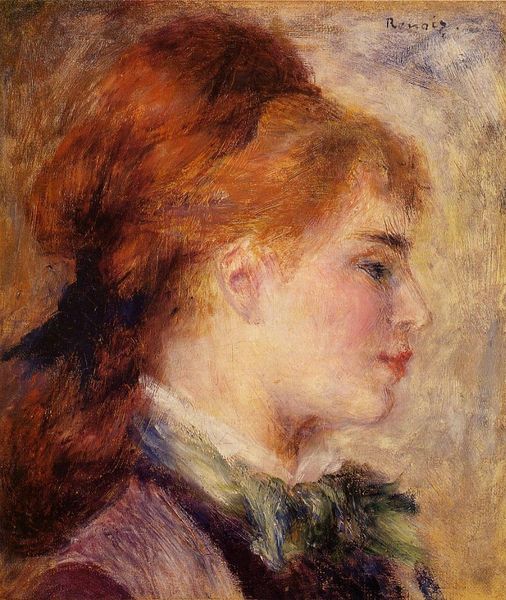
Copyright: Public domain
Curator: Standing before us is Renoir’s “Portrait of Madame Claude Monet,” painted in 1872. It's an oil painting, and it’s currently held in a private collection. Editor: My initial impression is one of quiet melancholy. The subject’s gaze is averted downwards, the brushstrokes soft, and the color palette muted—creating an introspective mood. Curator: Yes, Renoir has definitely captured a contemplative moment. What interests me is the use of visible brushstrokes, typical of the Impressionist movement. Notice how the application of paint isn’t about blending but rather about capturing the fleeting effects of light on form, contributing to the sketch-like quality of the painting. Editor: Precisely. The painting demonstrates the Impressionists' desire to explore modernity through the private life and through domestic portraiture, while earlier portraiture would focus more on the grandeur and idealisation of its sitter. Consider the revolutionary nature of portraying a subject in such a private and relaxed state at the time. Madame Monet appears almost vulnerable. Curator: And consider the way Renoir deploys color to describe form, for example, see how blues in the upper left balance the peach and skin tones. Color doesn't adhere to a mimetic function, but it actively contributes to creating visual structure. And do note the dress' collar with its broken whites creating a vibrant focal point. Editor: Absolutely. Looking at it now, it is less melancholic. We also cannot ignore the implication of friendship here. Renoir, along with other avant-garde painters like Monet, chose their immediate circles as their models to paint and experiment with. Curator: This is a beautiful rendering of his friend, showing the technical skill of his hand. In this light, its place in the narrative of Renoir's development, particularly the beginning of his dedication to figure and portrait paintings, and to a particular modern aesthetic, cannot be understated. Editor: Yes, seeing it as a document of the early stages of Impressionism shifts the initial perspective quite powerfully.
Comments
No comments
Be the first to comment and join the conversation on the ultimate creative platform.
